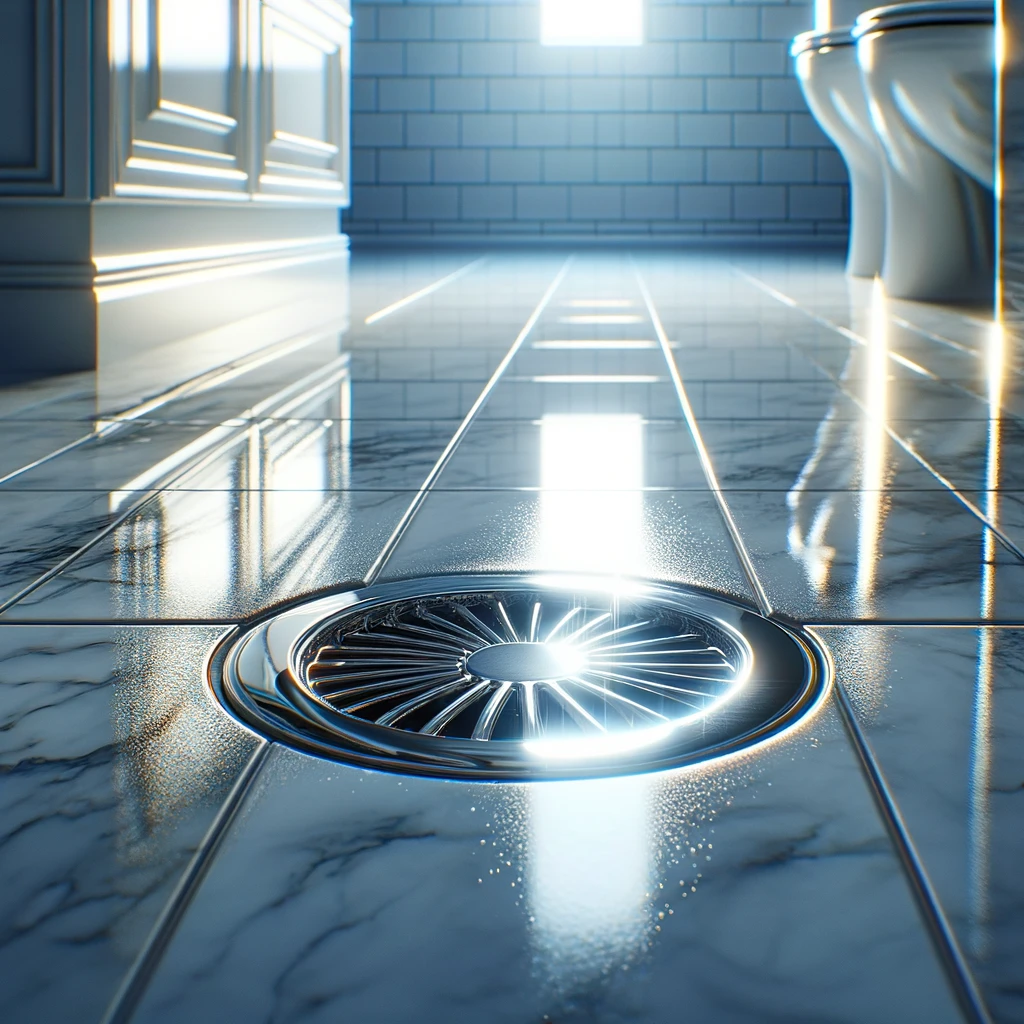7 Easy Tips for Keeping Your Bathroom Drain Sparkling Clean
A Bathroom Drain Sparkling Clean: that unsung hero of plumbing that we only notice when it’s too late and we’re standing in an unexpected puddle during our shower. Keeping it sparkling clean not only saves us from waterlogged feet but also keeps our bathroom smelling fresh and functioning well. Here are seven simple, yet super effective tips to keep your bathroom drain not just clear, but sparkling clean! 1. Boiling Water This simple yet powerful cleaning hack doesn’t require any fancy equipment or harsh chemicals, making it an eco-friendly choice for those of us looking to maintain our homes in a more sustainable way. To get the most out of this method, consider making it a regular part of your weekly bathroom maintenance. For instance, you could choose a specific day of the week to “boil the troubles away.” However, it’s important to exercise caution with this method, especially around bathroom fixtures made of delicate materials like porcelain. These can be susceptible to damage from sudden temperature changes. To mitigate this risk, you can pour the boiling water directly into the drain rather than letting it splash over the surrounding areas. Alternatively, if your sink or tub is particularly sensitive, consider using very hot water from the tap instead of boiling water to avoid any potential damage. For those hard-to-reach areas or stubborn buildup, you might follow up the boiling water with a plunger or a plumber’s snake to ensure everything is flowing smoothly. This one-two punch is often enough to keep your drains clear and functional without resorting to harsh chemicals or professional intervention. 2. Daily Flushing with Cold Water While it may seem counterintuitive, especially after discussing the benefits of boiling water, flushing your bathroom drain with cold water on a daily basis can also contribute significantly to keeping it clear and clean. Cold water, especially after using the sink or shower, can help solidify and flush away any residual oils or products that have been used. These substances, which might include hair conditioners, body oils, or shaving creams, often cling to the sides of pipes when they’re in their warmer, more viscous state. By running cold water through the drain for a minute or so, you’re essentially helping to harden these residues. This practice is particularly useful after shaving or washing hair in the sink, as it helps ensure that loose hairs are fully flushed away rather than getting caught in the drain. Over time, this can reduce the likelihood of clogs forming, maintaining a smoother flow of water through your pipes. Incorporating this simple step into your daily routine requires minimal effort but can have a meaningful impact on the maintenance of your bathroom’s plumbing. It’s an easy, yet effective strategy to complement the more intensive cleaning measures, ensuring that your bathroom drain remains as clear and functional as possible. 3. Old Toothbrush Beyond just the practicality, repurposing old toothbrushes for cleaning tasks is a nod towards environmental sustainability. Instead of contributing to landfill waste by throwing them away, you’re giving them a second life. This approach aligns with eco-friendly cleaning practices, emphasizing reuse and reducing waste without compromising on cleanliness. To effectively use an old toothbrush for cleaning your drain, start by dipping it in a cleaning solution. The liquid will help dissolve the grime, while the mechanical action of the toothbrush bristles works to scrub it away. For tougher buildup, consider using the toothbrush in conjunction with a plunger or drain snake for a comprehensive clean. The toothbrush’s design, initially intended for meticulous dental hygiene, translates well to meticulous home hygiene. Its handle offers a comfortable grip for sustained scrubbing sessions, while the varied bristle lengths typically found on toothbrushes can reach uneven surfaces within the drain area. Regular use of an old toothbrush for cleaning around the drain cover and inside visible parts of the drain can significantly reduce the likelihood of clogs forming. By incorporating this simple tool into your cleaning arsenal, you’re not just taking care of your home in an effective manner; you’re also doing your part for the planet by reusing and recycling what might otherwise be considered waste. 4. Hair Catcher This straightforward yet effective device is designed to fit snugly over the drain, trapping hair, soap scum, and any other debris that could potentially lead to blockages. By capturing these elements before they have a chance to enter your plumbing system, a hair catcher significantly reduces the risk of clogs forming deep within the pipes. The beauty of using a hair catcher lies in its simplicity and ease of use. Installation typically requires no tools or plumbing expertise; you simply place it over or inside your drain. Despite its simple design, the impact on your drain’s health and functionality is profound. With this guardian in place, water continues to flow freely, and the need for chemical cleaners or professional plumbing services can be drastically reduced. Regular maintenance of your hair catcher is crucial to ensure its effectiveness. This involves a simple routine of removing the catcher, discarding the collected debris, and giving it a quick clean. Depending on your household’s needs, this could be a weekly task, ensuring that the catcher remains efficient at trapping debris without impeding water flow. For an even deeper clean, soaking the hair catcher in a vinegar solution can help dissolve any soap residue or buildup, keeping it in top condition. Investing in a hair catcher is a proactive step towards sustainable home maintenance. Not only does it save you the hassle and expense of dealing with clogs, but it also reduces the need for potentially harmful chemical drain cleaners, aligning with eco-friendly cleaning practices. Moreover, the hair catcher’s longevity and reusability make it an economical choice, offering lasting protection for your drains with minimal environmental impact. 5. Professional Drain Cleaner The chemical composition of many professional drain cleaners allows them to power through tough blockages, but this potency also means they can be quite harsh on your plumbing
7 Easy Tips for Keeping Your Bathroom Drain Sparkling Clean Read More »

